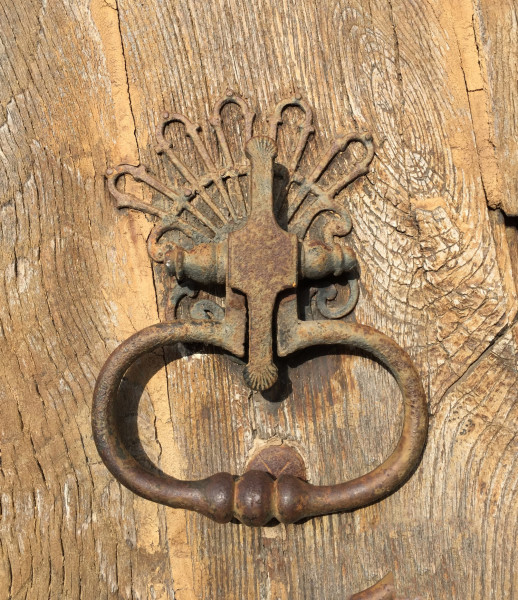So as explained, the village where the house lies is on one of the routes that leads to Compostela. Three main routes start in France, but there are many minor ones, (after all your pilgrimage starts from where you start) – you simply join a more arterial one the closer you get.
Our one passes through Rieux-Minervois and Malves-en-Minervois, having started in Montpellier, and carries through to Carcassonne and beyond.
You can see the main towns through which this particular route passes here:
Route to Compostela via Carcassonne
The meaning of the scallop shell still hasn’t been identified entirely, but these are the recent thinkings:
- …one legend says the apostle once rescued a knight covered in scallop shells
- …a similar version of the same story explains that a knight’s horse fell into the water and emerged covered in scallop shells, while the remains of Saint James were being taken from Jerusalem to Galicia
- …it’s understood the Road to Compostela had also become a kind of fertility pilgrimage, taken by couples in need of help to have children
- …the shape of the scallop shell also resembles the setting sun, which would have been an important daily event, full of symbolism in pre-Christian societies…the very shape of the ridges of the scallop converge to a single point, possibly Compostela.


This is the knocker and the original lock on the front door. The knocker clearly shows the backplate in the form of a scallop with the five shapes converging to a central point. If you look closely, you can also see a single shell design on either end of the vertical part. Inside, the lock is linked by a mechanism to the knocker, which can be swung to the left to unlatch the door.
The oak front door is original, c1770, so the question that arises is why the original owner of this house decided to put this particular knocker on.
Was the whole house conceived to welcome pilgrims?
Without more data about the number of pilgrims that passed through at that time, it’s difficult to get a definitive answer. What is known however, is that during the Middle Ages, the Black Death, and heavy political unrest in Europe, very few pilgrims would have travelled any of the routes. In 1985 the number was 690 who reached Compostela, whilst in 2015 the number had risen dramatically to 262,000.
